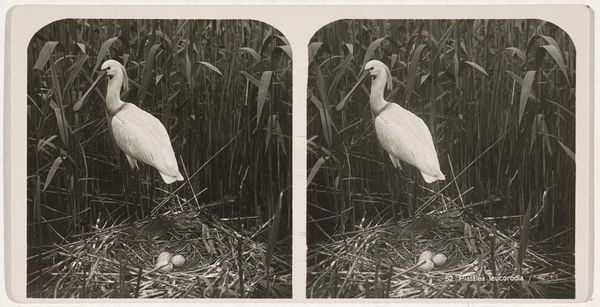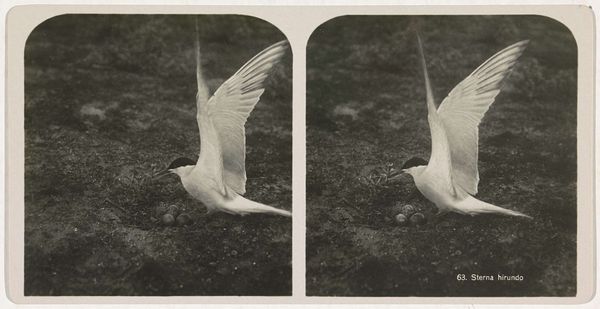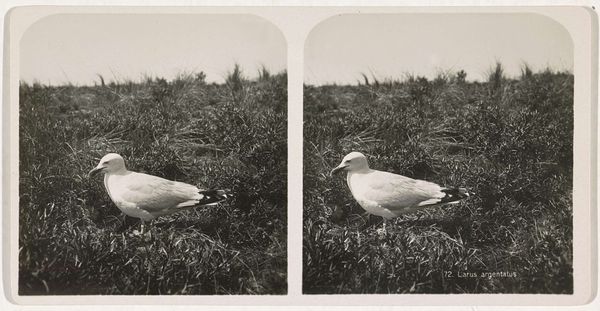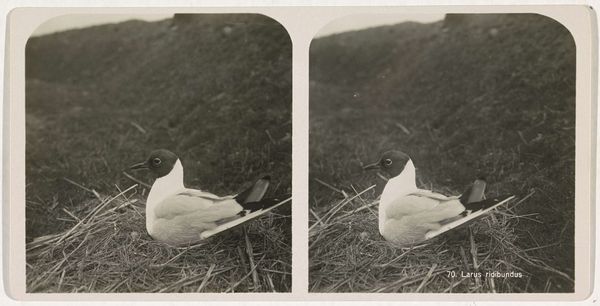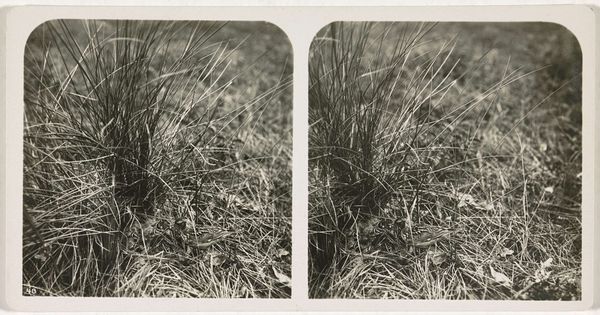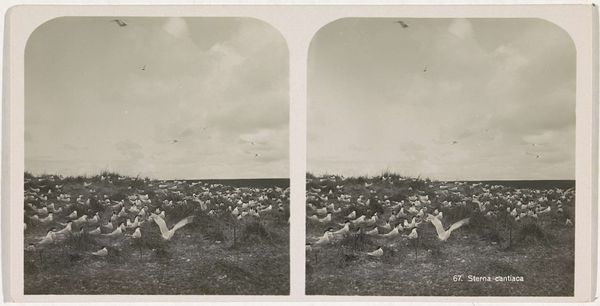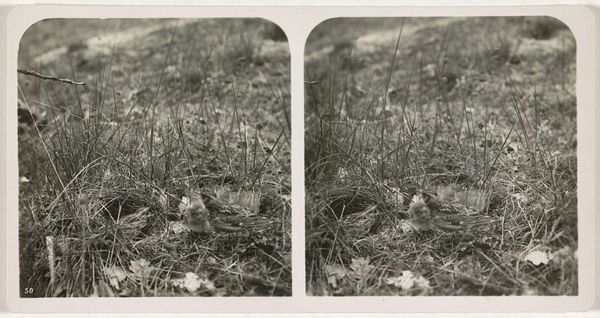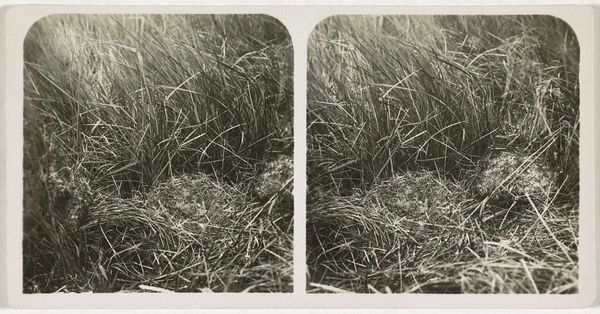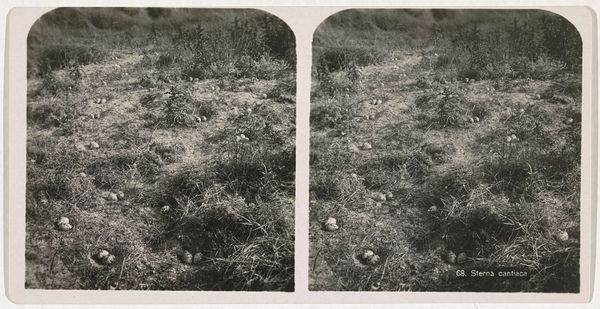
photography, gelatin-silver-print
#
still-life-photography
#
landscape
#
photography
#
gelatin-silver-print
#
realism
Dimensions: height 85 mm, width 165 mm
Copyright: Rijks Museum: Open Domain
Curator: Before us is "Noordse stern op nest", a gelatin-silver print estimated to have been created sometime between 1870 and 1940, and part of the Rijksmuseum's collection. Editor: There's something immediately compelling about its starkness. The composition feels both simple and very carefully observed. It evokes a sense of stillness and naturalism. Curator: It certainly captures a moment frozen in time. Adolphe Burdet, the photographer, offers us a serene glimpse into the bird's habitat, where a Northern Tern sits nesting amidst tall grass, framed by the water and distant horizon in the background. It uses the conventions of landscape while focusing very deliberately on an intimate detail. Editor: Considering this piece was created at a time when photography was still developing, this work shows that its composition, from the angle to the careful positioning of the subject, reflects very precise visual decision-making, framing a statement on both man's relationship with nature, but the intrinsic visual properties of photography as a medium. Curator: And one could argue it does a kind of ecological service by putting on display the Northern Tern—we might consider the impact of representing at risk natural worlds. The work gives us the bird isolated, a symbol perhaps of an untouched habitat slowly vanishing. The context is the historical changes undergone during and after the industrial revolution. Editor: Interesting that you mention the industrial context! As to formal consideration, the textures within this small gelatin silver print are captivating, ranging from the intricate detail of the grasses to the plumage and smooth gradations of the bird to the hazy, almost impressionistic rendering of the horizon. This variety invites the eye to linger. Curator: The contrast of sharp focus on the immediate and softer, muted backgrounds suggests the importance of preserving what is in immediate view. Its visual strategy urges conservation by bringing these landscapes into people's immediate consciousnes, almost turning a documentary exercise into a statement of social concern. Editor: Indeed, this picture reveals not only a mastery of photographic technique but also shows how to weave together formal elements to create a quietly profound experience, full of the kind of careful planning of line, shadow, and focus that goes into landscape paintings from the Renaissance! Curator: It does, yes. Seeing this makes me think more broadly about landscape as a source of contemplation, and its function in conveying social themes! Editor: And I am struck again by the compositional strength in the contrasting planes, it underscores the careful intentionality in its craft.
Comments
No comments
Be the first to comment and join the conversation on the ultimate creative platform.


